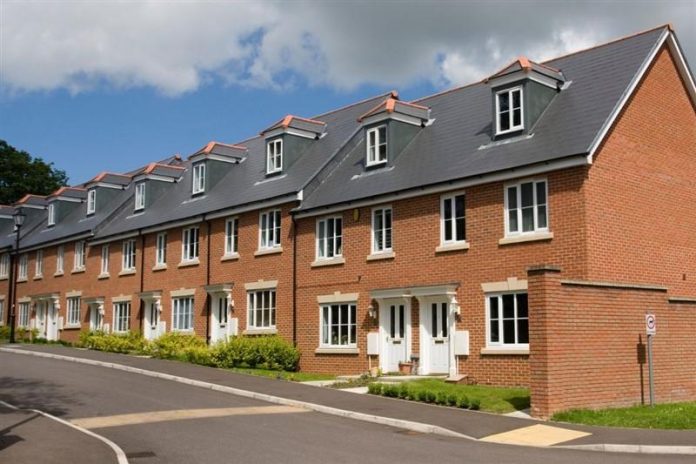Build to Rent (BTR) is the UK’s fastest-growing sector and this trend looks set to continue throughout 2023 and beyond.
The British Property Federation (BPF)’s Build to Rent Q3 2022 report shows the sector growing 15% year-on-year, with over 240,000 homes either in planning, under construction, or completed.
Earlier iterations of the BTR model were designed to appeal primarily to Gen Z and Millennial cohorts. According to the BPF’s 2021 analysis of BTR occupancy in London, BTR tenants were mostly professionals, of which 25% worked in the financial services sector.
But while BTR began in urban areas, regional growth has now surpassed that of the Capital, regional growth is now surpassing that of London: the BPF’s Build to Rent Q3 2022 statistics show regional BTR growing at almost triple the pace of that in London: 20%, compared to 7%.
This considerable growth responds to a changing demographic in the private rented sector. According to the English Housing Survey 2022, the number of households renting privately has increased by 93% in the last 15 years, while the number of owner-occupied households has grown by just 3%. The increased number of people renting is not solely linked to mortgage rates or the economy but is part of a longer-term trend which also responds to the preference among younger generations for more flexibility. The same survey shows an emergence of a new tenant demographic: renting households with dependent children has doubled since 2003/4, making up 30% of the sector and the number of ‘comfortable renters’ (defined as those in managerial professions, who hold degrees and are in good health) is expanding too, representing 44% of the rental sector.
The fast-emerging form of regional Build to Rent (BTR) has, to date, been known interchangeably as ‘suburban BTR’ or ‘Single Family Housing’ (SFH).
We believe that this description best depicts this new offer: family homes, located outside urban areas, which despite being individual units, maintain the strong sense of community which made BTR such a success. Other intrinsic values of traditional BTR are continued in BTR suburban communities – including high levels of service, flexible tenancies and a focus on sustainability. At the same time, these communities provide something very different, accommodating Millennials (BTR’s original target market) as they move into their next stage in life.
So what is the future BTR suburban community and how does it differ from a standard housing development?
A BTR suburban community offers much more than just a new house. It’s a community in which an individual or family occupies a house, one which can be made their own – but could be swapped for another as the family’s needs change: rather than building an extension, the family could simply move to a larger house; if they developed an interest in gardening, they could move to a house with more outside space; as empty-nesters, they could move again – with each move being free from the complications of buying and selling.
In some cases, homes within BTR suburban communities will be finished and furnished, leaving the new occupier nothing to do but to switch on the broadband and make themselves at home.
Typically a BTR suburban community offers 24/7 security, all-inclusive bills and a range of additional services such as cleaning, gardening and even dog walking. Some are powered by a district heating system, using clean, renewable energy and removing the need for a boiler – or even an energy bill. Future-proofed, each home will provide an EV charging point.
The range of services typically available in such developments might include a cinema, a BBQ area, a residents’ lounge, or perhaps a dining or party suite. With a concierge to oversee and arrange repairs, maintenance and deliveries, also dry cleaning, childcare arrangements and even a ‘library of things to save the inconvenience and expense of one-off purchases, BTR suburban communities are centred around convenience.
Like traditional BTR, BTR suburban communities prioritise health and well-being, supporting active travel in the form of bike hire/storage, access to good public transport links and car clubs. They might also provide outdoor spaces for exercise and recreation, a gym, exercise studio or pool. And they typically support remote working through co-working spaces with meeting rooms, and of course, superfast broadband.
The administration is simple and accountable, with flexible leases, predictable rents, secure tenancies and moves free of fees and other costs. The entire experience is managed with simplicity, with technology for those who wish to use it and a friendly concierge for those who do not.
Furthermore, BTR suburban communities tick all the boxes in relation to the Government’s aspirations, including sustainability (on multiple levels), ‘building beautiful’ and the concept of the 15-minute neighbourhood. BTR suburban communities are also ideally placed to meet housing need and deliver on the levelling up agenda.
BTR has only just celebrated its tenth birthday. But spanning property and service sectors, urban and rural locations and appealing to every demographic group, BTR has already come of age.
So is the rapid reinvention complete, or will BTR continue to advance in its second decade? The research that informed our white paper indicates that BTR has significant unresolved potential, especially as it moves beyond its traditional city base, attracting substantial interest from investors, presenting opportunities for developers to diversify, and appealing to an almost unlimited market. Add to this the trends towards both renting and counter-urbanisation, and a political will to ‘professionalise’ the private rented sector, and considerable new opportunities present themselves.







